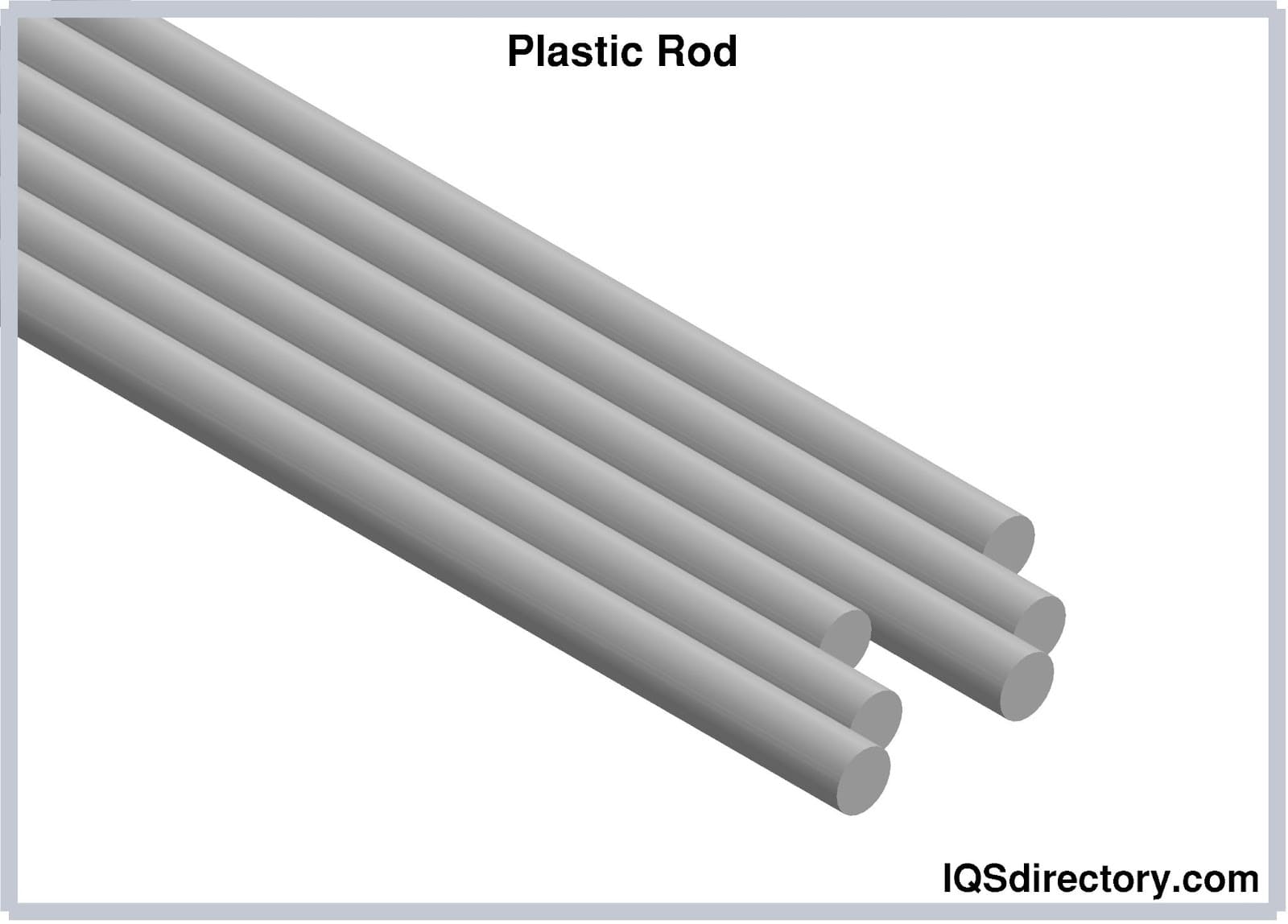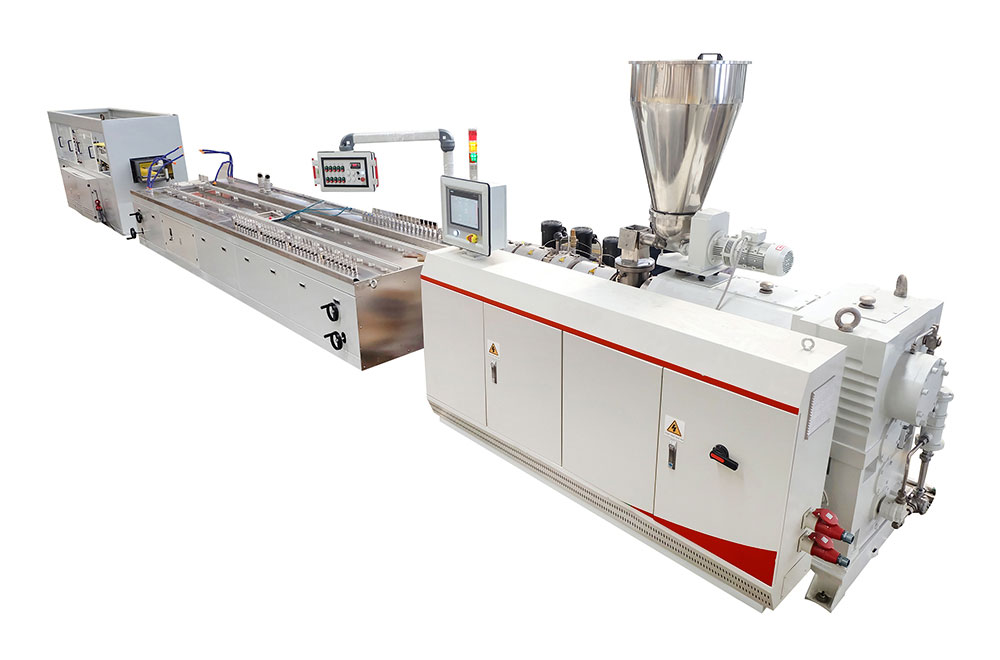Plastic extrusion for optimized, expandable manufacturing solutions
Plastic extrusion for optimized, expandable manufacturing solutions
Blog Article
A Comprehensive Overview to the Refine and Benefits of Plastic Extrusion
In the huge realm of production, plastic extrusion arises as a important and extremely reliable process. Transmuting raw plastic into continuous profiles, it caters to a variety of industries with its impressive flexibility.
Comprehending the Fundamentals of Plastic Extrusion
While it might show up complicated at very first glance, the process of plastic extrusion is fundamentally basic - plastic extrusion. It is a high-volume manufacturing technique in which raw plastic is thawed and shaped right into a continuous account. The process begins with the feeding of plastic material, in the kind of powders, granules, or pellets, into a warmed barrel. The plastic is after that melted using a combination of warmth and shear, applied by a revolving screw. When the molten plastic reaches completion of the barrel, it is forced with a small opening called a die, shaping it into a desired kind. The designed plastic is after that cooled down, strengthened, and cut into preferred lengths, finishing the process.
The Technical Refine of Plastic Extrusion Explained

Kinds Of Plastic Suitable for Extrusion
The selection of the appropriate sort of plastic is a crucial facet of the extrusion process. Various plastics provide distinct buildings, making them much more fit to certain applications. Polyethylene, for instance, is commonly made use of because of its affordable and simple formability. It provides exceptional resistance to chemicals and dampness, making it perfect for products like tubing and containers. Similarly, polypropylene is an additional preferred choice due to its high melting point and resistance to tiredness. For even more robust applications, polystyrene and PVC (polyvinyl chloride) are usually selected for their toughness and longevity. These are usual options, the selection ultimately depends on the particular needs of the product being produced. Understanding these plastic types can significantly enhance the extrusion process.
Contrasting Plastic Extrusion to Various Other Plastic Forming Techniques
Recognizing the kinds of plastic suitable for extrusion leads the way for a more comprehensive conversation on exactly how plastic extrusion compares to other plastic forming approaches. These consist of shot molding, impact molding, and thermoforming. Each technique has its distinct usages and benefits. Shot molding, as an example, is superb for developing complex parts, while strike molding is perfect for hollow objects like bottles. Thermoforming excels at creating superficial or large parts. Plastic extrusion is unmatched when it comes to producing continual accounts, such as gaskets, pipelines, and seals. It likewise enables a regular cross-section along the size of the item. Thus, the selection of approach largely depends upon the end-product requirements and specifications.
Key Benefits of Plastic Extrusion in Manufacturing
In the world of production, plastic extrusion provides several significant advantages. One notable benefit is the cost-effectiveness of the process, that makes it a financially attractive manufacturing technique. In addition, this method offers exceptional product flexibility and boosted production speed, thereby raising general production efficiency.
Affordable Manufacturing Technique
Plastic extrusion jumps to the center as an economical manufacturing approach in manufacturing. This process stands apart for its capacity to create high quantities of material promptly and efficiently, offering suppliers with substantial cost savings. The primary Read Full Article price advantage is the capacity to use less costly basic materials. Extrusion utilizes thermoplastic materials, which are much less expensive compared to porcelains or steels. Further, the extrusion link process itself is reasonably simple, decreasing labor prices. Furthermore, plastic extrusion calls for less power than standard production techniques, adding to lower functional costs. The procedure additionally reduces waste, as any type of excess or malfunctioning products can be reused and recycled, giving one more layer of cost-effectiveness. In general, the monetary benefits make plastic extrusion a highly attractive alternative in the production industry.

Superior Product Adaptability
Beyond the cost-effectiveness of plastic extrusion, one more significant advantage in making lies in its remarkable item versatility. This process enables the production of a wide selection of products with differing shapes, dimensions, and designs, from easy plastic sheets to complex profiles. The versatility is attributed to the extrusion die, which can be personalized to produce the preferred product style. This makes plastic extrusion an optimal solution for industries that call for personalized plastic parts, such as automobile, construction, and packaging. The capacity to generate diverse products is not just beneficial in meeting particular market demands yet additionally in making it possible for suppliers to explore brand-new product with minimal capital expense. Basically, plastic extrusion's item adaptability fosters advancement while enhancing operational efficiency.
Enhanced Production Rate
A considerable advantage of plastic extrusion exists in its improved manufacturing rate. Couple of various other production procedures can match the rate of plastic extrusion. Furthermore, the capability to preserve regular high-speed production without giving up product high quality establishes plastic extrusion apart from other techniques.
Real-world Applications and Effects of Plastic Extrusion
In the world of production, the method of plastic extrusion holds profound significance. This process is extensively used in the manufacturing of a variety of items, such as plastic tubing, window frameworks, and weather removing. Therefore, it greatly influences markets like building and construction, packaging, Click Here and vehicle sectors. In addition, its influence encompasses daily products, from plastic bags to toothbrushes and disposable cutlery. The financial advantage of plastic extrusion, largely its high-volume and cost-effective outcome, has changed manufacturing. The ecological influence of plastic waste remains a problem. The market is persistently making every effort for developments in naturally degradable and recyclable products, indicating a future where the benefits of plastic extrusion can be maintained without jeopardizing environmental sustainability.
Final thought
To conclude, plastic extrusion is a highly reliable and reliable method of transforming resources into varied items. It offers numerous benefits over various other plastic forming methods, consisting of cost-effectiveness, high output, marginal waste, and style flexibility. Its effect is profoundly felt in different markets such as building and construction, vehicle, and durable goods, making it a critical process in today's manufacturing landscape.
Delving much deeper right into the technological process of plastic extrusion, it starts with the selection of the suitable plastic product. As soon as cooled down, the plastic is reduced into the required sizes or injury onto reels if the product is a plastic movie or sheet - plastic extrusion. Contrasting Plastic Extrusion to Other Plastic Forming Techniques
Recognizing the kinds of plastic ideal for extrusion paves the means for a more comprehensive conversation on just how plastic extrusion stacks up against other plastic forming methods. Few various other production procedures can match the rate of plastic extrusion.
Report this page